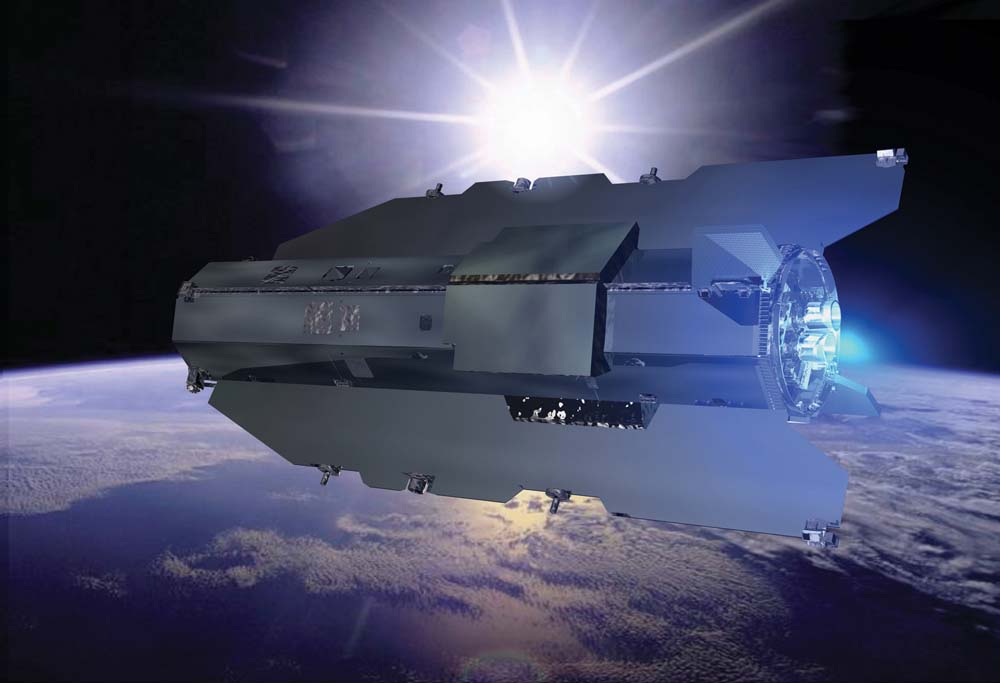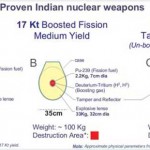India and China commenced their respective journey into space piggy back on the Soviet Union about six decades ago. But within a decade, China broke off from the Soviets and commenced her solo journey into space. China’s resolve and intent were clear and publicly stated by Mao,“…to make China an equal with the superpowers with the objective of placing a satellite in orbit by 1959 to celebrate the tenth anniversary of the founding of the PRC.”1 China trusted and placed the space program under People’s Liberation Army with military intent. China achieved what it stated and is a space power to reckon with today. India, on the other hand, made a modest beginning under civilian establishment with no military intent. India took baby steps and made modest gains and today is a space power in her own right.
A nation aspiring to become regional or global power must have empowered Defence Forces capable of winning wars, indigenous weapon systems manufacturing industry, national sources for energy needs, dominate outer space and cyber space; anything short – expression of such aspirations are only delusions of grandeur.
Since time immemorial, man has always desired to dominate his environment. Be it for self-preservation or as programmed by nature, the physically strongest in the herd was the first, the fastest and the best. Gaining domination through military power was the latent motivation and driving force for the inventions or discoveries that man made in air and outer space.
Air Space
Almost as soon as aircraft were invented, they were used for military purposes. As is a man’s wont to dominate, it was not long before aircraft were shooting at each other. World War II saw a great increase in the pace of development and production, not only of aircraft but also the associated flight-based weapon delivery systems.
The Indian government never took the military into the calculus of planning the strategy for national defence…
Military use of airplanes or for that matter any emerging technology or invention, took precedence over commercial use. By 1955, most development efforts shifted to guided Surface-to-Air Missiles. With the launch of the Sputnik in 1957 by the Soviet Union, the ICBM front opened for long-range and fast nuclear weapons delivery.2 Thus began the space race among the nations.
Exploration of Outer Space
Among the many pressing military needs was communications with forces operating at sea and over inhospitable or inaccessible terrain. The terrestrial means available could not measure up to these pressing military requirements. Hence the military necessity to explore outer space to fulfill these requirements arose.3 The Soviet space program achieved many of the first milestones, including the first living being in orbit in 1957, the first human spaceflight in 1961, the first spacewalk on March 18, 1965, the first automatic landing on another celestial body in 1966 and the launch of the first space station in 1971.
Aspiring to play a larger role and to become a global power, China began its space exploration under the People’s Liberation Army.4 Due to Cold War tension, in December 1963, Mao decided that China should develop missile defence system capability. On October 27, 1966, a nuclear-tipped DF-2A missile was launched from Jiuquan and the 20-kilotonne yield nuclear warhead exploded. As the Space Race between the two superpowers reached its climax with the US conquest of the Moon, Mao Zedong and Zhou Enlai decided on July 24, 1969, that the PRC should not be left behind and therefore, initiated China’s own crewed space program.5
India, on the other hand, under lofty ideals of guiding the world to peaceful co-existence, began space exploration with no military content or intent. The Indian government never took the military into the calculus of planning the strategy for national defence. India’s first satellite, the Aryabhatta, was launched by the Soviet Union on April 19, 1975.6
Militarised Outer Space
Space-based capabilities provide essential support to military operations across the joint battle space. Space-based systems, integrated with the terrestrial C4I infrastructure, provide critical capabilities for war fighting in joint operations on land, sea and in the air7. Thus nations having built these capabilities started dictating terms to lesser nations and had a greater say in the UN. Peeved at this, China accelerated her space programme.
The drone program has involved more than 370 attacks in Pakistan since 2004…
From the perspective of the 21st century, the use of American military space systems in Operation Desert Storm may be seen as a watershed in the history of military technology and military tactics, ranking with the introduction of effective armored tactics in World War II, the machine gun at the beginning of the last century and perhaps in time it will rank with the introduction of gunpowder, the long-bow, chariots and bronze swords several millennia ago.8
Military and non-military activities in space are becoming increasingly inter-dependent and terrestrial military forces becoming ever more dependent on an ever-growing numbers of operational military spacecraft. The United States operates separate military and civilian low altitude weather satellites, though the military uses data from both systems. Russia operates a single network of such satellites, presumably for the equal convenience of military and civilian users.9
Global Positioning System (GPS), developed by the United States Air Force and provided free to everyone, is the world’s public utility in a similar manner as the internet developed by Pentagon. Today, GPS is a critical part of the planet’s infrastructure and the backbone of civil, economic, and defence activity everywhere.10 The Russian Global Navigation Satellite System (GLONASS) and European Union Galileo positioning system were developed contemporaneously with GPS. Indian Regional Navigation Satellite System and the Chinese Beidou Navigation Satellite System are underway.
An increasing number of unmanned military satellite projects reached maturity in the 1970s and 1980s. To manage these complex projects, some of which made possible verification of the arms control and nuclear test ban treaties, HQ-USAF established Air Force Space Command on November 15, 1985.11
The Chinese interest in selling launch services to the West may be based from a desire to utilise manufacturing facilities that were originally constructed to produce ICBMs. And over the past two years, the US Air Force has gained control of American commercial expendable launch vehicles.12 France and Britain, who have long used space for military communications, will soon follow China’s lead in placing military intelligence satellites in space. Canada and Italy are planning new military communications systems, and Canada is evaluating more ambitious projects as well. Israel joined the ranks of space-faring nations in 1988, and is ready for launching more sophisticated intelligence collection satellites.13
Space is an integral component of United States military planning. A sure sign of its essential nature can be found in the dozens of satellites from the United States and its international coalition partners that supported military campaigns in the Republic of Iraq in 2003, the Islamic State of Afghanistan in 2001, and the Federal Republic of Yugoslavia in 1999.14 Satellites don’t attack directly, but rather they offer what the Pentagon calls “force enhancement” – surveillance, reconnaissance, communications, navigation, missile warning. In fact, they are used to relay the most sensitive information between the US President and the armed forces.15
The advent of asymmetrical warfare with the emergence of non-state players of various hues and shades has added a new dimension to war fighting. Terrorists are well versed with technology and locating them is becoming increasingly difficult. In fact, many use space-based technology to their advantage. September 09, 2001 and November 26, 2008 attacks are stark reminders of this.
The ISRO opposed military applications for its dual-use projects such as the SLV-3…
The CIA has been using drones guided and controlled through satellites in Pakistan and other countries to assassinate “terrorist leaders.” While this programme was initiated by the Bush Administration, it has increased under Obama and there have been 41 known drone strikes in Pakistan since Obama became President.16 US forces use information from satellite-based top-secret signals intelligence to identify the location of terrorist suspects. It is then fed into a drone strike program and other military operations. The drone program, which has involved more than 370 attacks in Pakistan since 2004, is reported to have killed between 2,500 and 3500 Al Qaeda and Taliban militants, including many top commanders.17 The United States launched a series of air strikes against Sunni militants in northern Iraq in September 2014, using Predator drones.18
Modern day technologies provides for pin-pointing the target and destroying it with surgical strikes. But in the context of Indian decision making matrix for the military, Admiral D.K Joshi (Retd) stated, “Where there is authority, there is no accountability. And where there is responsibility, there is no authority. Professional competence, domain expertise, accountability, responsibility and authority, these all reside in separate silos in different locations. While professional competence, accountability, responsibility is with the service, that is not the case with authority. And by authority, I really mean the power to approve something, empowerment to approve something or the other.”19
Admiral Joshi added, “Those who wield authority have no accountability and vested interests have stalled reforms in Higher Defence Management”.20] &21 Thus the vested interests of politico-bureaucratic nexus have found it unprofitable to equip the military with such technology to eliminate terrorism and reduce own casualties. India has been tackling state-sponsored terrorism since 1989 by merely putting more boots on ground. In developed countries, the governments trust their military. Thus the military drive the technology-based industry for production of war winning weapon systems to ensure national security and national interests.
Militarisation and Weaponisation of Outer Space
Space weaponisation is generally understood to refer to the placement in orbit of space-based devices with destructive capacity.22 Currently, there are no weapons deployed in space. The United States has invested in developing potential technologies and both China and the United States have demonstrated anti-satellite capabilities in 2007 and 2008, respectively. The United States Department of Defense continues to invest in programs that could provide anti-satellite and space-based weapons capabilities.23 Chinese officials have expressed growing concern and Beijing may feel compelled to respond by introducing its own space weapons.24
Satellites are vulnerable to an array of weapons and disruptive technologies such as anti-satellite missiles and sophisticated cyber-attacks that can have potentially devastating results from degrading capabilities to complete annihilation. There is strong evidence that the anti-satellite weapon China tested in May 2013 went higher than low-Earth orbit, inferred a space and public policy consulting group. If China continues to make strides and develops weapons that reach farther, it could one day threaten key satellites in geosynchronous orbit.25






good eveining sir. i am cdr mukesh tayal from indian navy currently doing staff college at dssc. very nice article sir. in fact we recently had a talk by DIA on related subjects. sir one query. does any country have capability for keeping sea under surveillance. what i mean is that we will not always have enough number of aircraft for surveillance of indian ocean, which is vast. future is that we use satellites for surveillance of vast areas of ocean. but unlike land areas which are stationary points, sea surveillance means capability to track mobile objects.
can u throw some light on this sir. regards